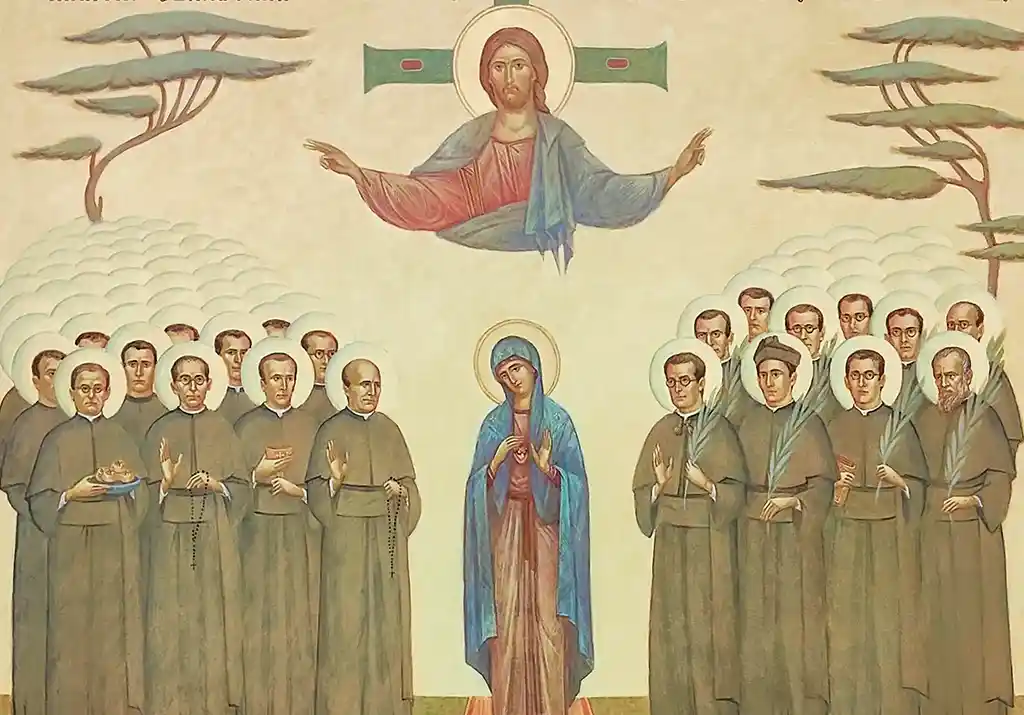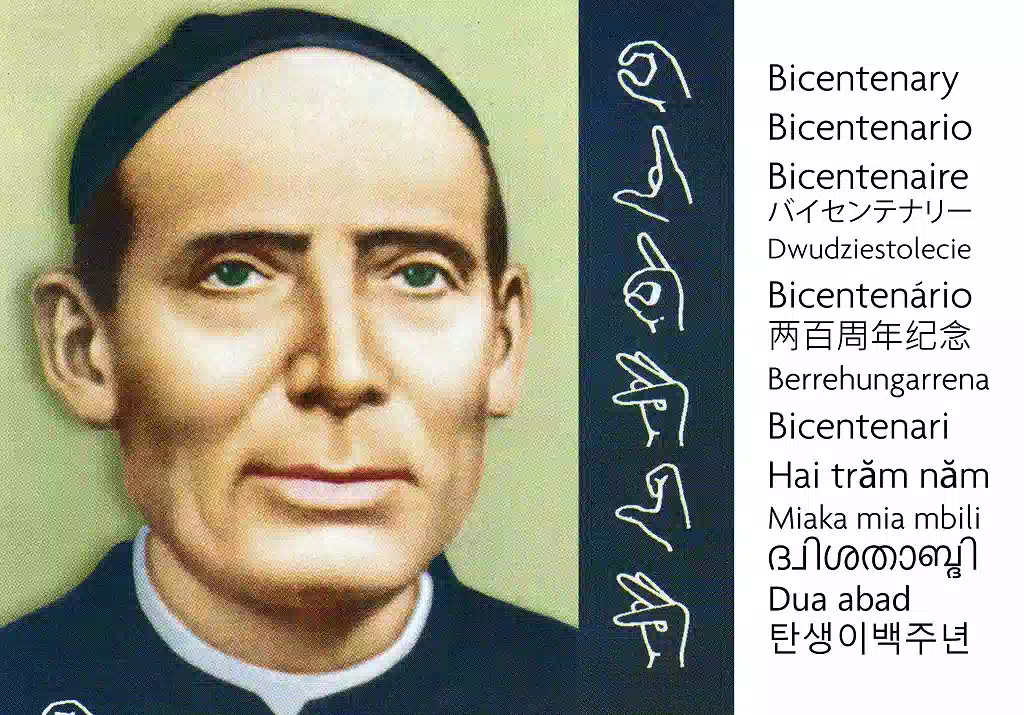February 1, 2020
For the second year we are going to celebrate in the whole Congregation the liturgical memory of Blessed Felipe de Jesús Munárriz Azcona, priest, and companions, religious and martyrs. As we know, this obligatory memory commemorates jointly the 184 Claretian martyrs who have been beatified so far. We remember, then, following the chronological order of beatifications, the 51 martyrs of Barbastro (October 25, 1992), Fr. Andrés Solá Molist (November 20, 2005), the 23 martyrs beatified in Tarragona (October 13, 2013) and the 109 beatified in Barcelona (October 22, 2017). Together with them, we also celebrate the memory of Blessed Maria Patrocinio Giner, Claretian missionary sister, martyr (beatified on March 11, 2001). It will take a while yet for this memory to take root among us as the solemnities of the Immaculate Heart of Mary and St. Anthony Mary Claret and the feast of Our Lady of Mount Carmel on the anniversary of the foundation of the Congregation have taken root.
The choice of the date of 1st February was made for various reasons. One – perhaps the most superficial – was to distribute the various commemorations throughout the year so that the liturgy would help to fan the flame of our missionary vocation. Another one – the most determinant – was to make the memory of the Blessed Martyrs coincide with the date of the attack that Claret suffered in Holguin (Cuba) on February 1, 1856. The Claretian Year also remembers this event in the section dedicated to the biographies. Although our Founder did not die a martyr, as he wished, his missionary spirituality is based on the desire to be conformed to the Christ who suffers and dies for love. Therefore, the shedding of blood in Holguin had great significance for him: “I can’t describe the pleasure, delight, and joy I felt in my soul on realizing that I had reached the long desired goal of shedding my blood for the love of Jesus and Mary and of sealing the truths of the Gospel with the very blood of my veins. My spirits soared at the thought that this was but a promise of what I might achieve in time-to shed my blood completely, in the ultimate sacrifice of death.” (Aut 577).
Actually, the desires of martyrdom came from way back. In the last years of his missionary campaigns in Catalonia, he experienced the troubles of the social situation. In this context, he wrote: “In the midst of all these turns of events I somehow got through. I had some good times and some so bitter that they made me weary of life. At such times the only thoughts and words I could summon up were about heaven, and this consoled and encouraged me greatly. I never refused suffering; rather, I loved it and even wanted to die for Jesus‘ sake.” (Aut 465). A little earlier, on 22 July 1844, in a letter to Don Cipriano Sánchez Varela, Bishop of Plasencia, he said: “Without sorrow and persecution I cannot live” (EC, I, p. 135). And in the 1852 resolutions he expressly alludes to his desire for martyrdom: “I desire to suffer martyrdom; therefore I will suffer the pains already involved in this period of preparation.”
Two years before his death, on 22 June 1868, he insists on the same thing: “Afterwards, throughout the night I kept dreaming and longing for martyrdom. Besides the light, I also saw three bulky black shapes, like three men, who were the three demons or three enemies who are bent on my death. I greatly desire to suffer martyrdom.” (Lights and Graces, 1868). Recalling the years spent at the court of Madrid, he wrote from Rome to his friend Dionisio Gonzalez on 26 May 1869: “I suffered twelve years of martyrdom” (EC, II, p. 1391). His death in the Cistercian monastery of Fontfroide closes an earthly cycle characterized by external persecution and by internal conformity to the Christ who is persecuted and dies on the cross. In his Definition of the Missionary, the five paschal verbs (to rejoice, to approach, to embrace, to be pleased and to rejoice) are allied with the five martyr nouns (privations, labours, sacrifices, slanders and torments) to form a beautiful synthesis of missionary spirituality. Claret, as a good son of the Immaculate Heart of Mary, thinks only of “how he can best follow Jesus Christ and imitate Him in [praying], working, suffering, and striving constantly and single-mindedly for the greater glory of God and the salvation of souls.” (Aut 494).
On January 25, in our Basilica of the Immaculate Heart of Mary in Santiago de Chile, Fr. General officially opened the celebration of the 150th anniversary of Claret’s death, which will be closed in Vic on October 24. To celebrate this year the memory of our Blessed Martyrs in the framework of this anniversary helps us to thank God for the lives of those who lived to the end the Definition of the Missionary and to revive our own vocational fidelity in challenging times. In some countries of the world (North Korea, Afghanistan, Somalia, Libya, Pakistan and many others), Christians are persecuted and some martyred. The memory of our Blessed Martyrs is an occasion to pray for them and to promote initiatives of inter-religious dialogue and respect for pluralism. In all places faith in Jesus is counter-cultural and provokes rejection when it comes into conflict with the interests of persons, institutions and states.
Remembering our Blessed Martyrs – and in them all those who shed their blood for Christ in our Congregation – also means preparing ourselves for a more authentic missionary life, one that does not withdraw in the face of the difficulties that evangelization presents today, but believes in the transforming power of witness. Not all of us are called to be martyrs who shed their blood, but witnesses and messengers of the joy of the Gospel in the fabric of daily life. The Claretian Year that we started last January 1st is helping us to remember many Claretians who were significant throughout our history in the most diverse missionary services.
We entrust to the intercession of the Blessed Claretian Martyrs the whole Congregation and, in a special way, those who, because of sickness, age or some kind of crisis, are experiencing suffering, “realizing that through our infirmity we fill up what is lacking in the sufferings of Christ.” (CC 45).
Fr. Gonzalo Fernández, CMF
General Prefect of Spirituality
MATERIALS/LITURGY:
http://www.itercmf.org/claretian-feast-days/memoria-of-the-blessed-claretian-martyrs/?lang=en









